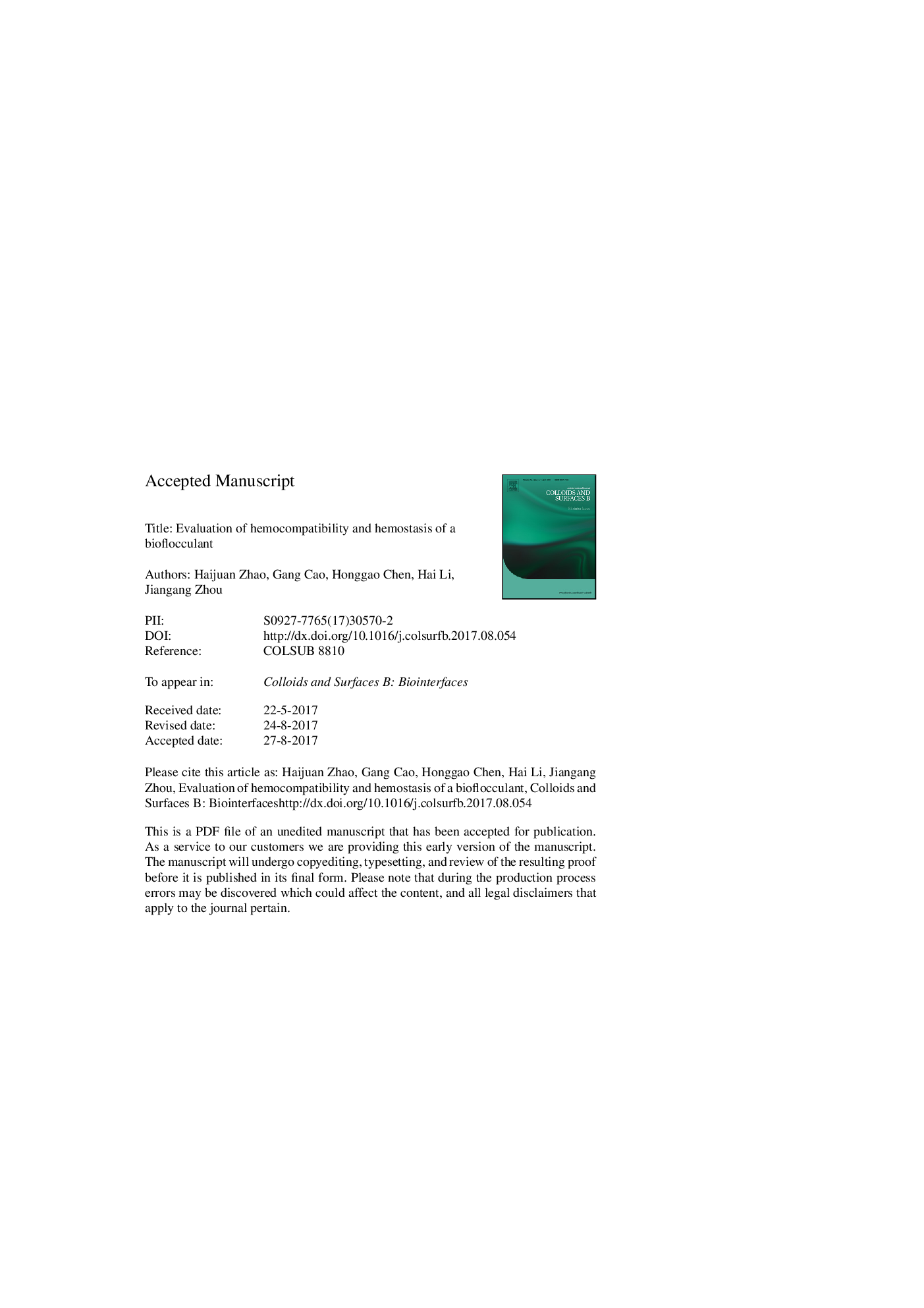| Article ID | Journal | Published Year | Pages | File Type |
|---|---|---|---|---|
| 4982989 | Colloids and Surfaces B: Biointerfaces | 2017 | 25 Pages |
Abstract
Bioflocculants are widely used in a large variety of applications, because of their wide range of flocculation. There is limited information in the literature about the ability of bioflocculants to perform beneficial functions without having adverse effects on blood components. In this study, general hemocompatibility of a bioflocculant (MBF-06) was investigated in an in vitro system, measuring flocculation of plasma proteins, red blood cell integrity, blood cell counts, platelet activation, clot formation, complement activation, cytotoxicity and inflammatory response. Effects of MBF-06 included low plasma protein flocculation, low platelet activation, low inflammatory response, no hemolysis or cytotoxicity and increased expression of coagulation markers, including prothrombin fragments 1Â +Â 2. These findings suggested that the rapid hemostasis caused by MBF-06 resulted, essentially, from humoral coagulation. Overall, our observations revealed the great potential of MBF-06 as a novel hemostatic agent.
Related Topics
Physical Sciences and Engineering
Chemical Engineering
Colloid and Surface Chemistry
Authors
Haijuan Zhao, Gang Cao, Honggao Chen, Hai Li, Jiangang Zhou,
